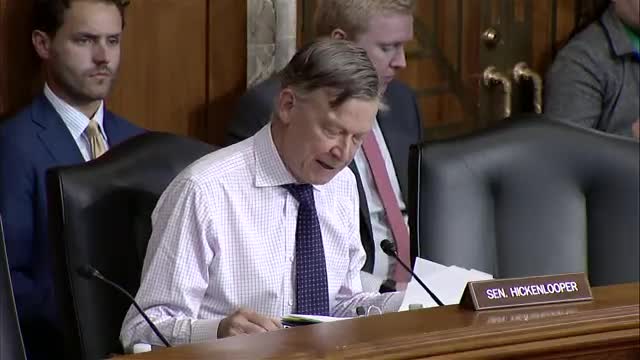
This article was created by AI using a video recording of the meeting. It summarizes the key points discussed, but for full details and context, please refer to the video of the full meeting. Link to Full Meeting
The session began with a discussion led by Senator Hickenlooper, who highlighted the pressing need for energy production in light of increasing electricity demands, particularly from large-scale data centers. He noted that these centers consume as much electricity as 2 million homes, emphasizing the urgency of expanding energy generation capabilities. Hickenlooper pointed out that 95% of energy projects currently in the pipeline are based on solar, wind, and battery storage technologies. He questioned the panel on whether prioritizing these renewable sources should be a focus moving forward.
In response, panelist Miss Robertson acknowledged the importance of reliable, secure, and affordable power. She discussed the potential for innovative energy sources, including geothermal and small modular nuclear technologies, to come online more quickly than previously anticipated. However, she cautioned that there would be significant pressure to meet energy demands in the next five years, particularly as funding for energy efficiency and renewable energy initiatives has been drastically reduced.
The conversation then shifted to the coal industry and its contributions to abandoned mine land (AML) funding and remediation efforts. Mr. Erdos provided insights into the financial mechanisms supporting AML, explaining that the coal industry contributes through fees based on tonnage produced. He detailed the specific fees for different types of coal, which fund the AML program, and mentioned the Infrastructure Investment and Jobs Act (IIJA) as a separate funding source.
As the meeting progressed, discussions also touched on appliance regulations enforced by the Department of Energy's Office of Energy Efficiency and Renewable Energy, indicating a broader commitment to energy efficiency across various sectors.
In conclusion, the committee's discussions underscored the critical intersection of energy production, regulatory frameworks, and funding challenges. The emphasis on renewable energy sources and the need for innovative solutions reflect the ongoing transition in the U.S. energy landscape. The committee plans to continue addressing these issues in future sessions, with a focus on ensuring a reliable energy supply while navigating the complexities of funding and regulatory environments.
Converted from WATCH LIVE: Committee Hearing on Several Pending Nominations meeting on July 11, 2025
Link to Full Meeting
Comments
View full meeting
This article is based on a recent meeting—watch the full video and explore the complete transcript for deeper insights into the discussion.
View full meeting